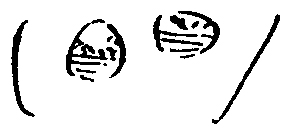To J. S. Henslow [26 March 1838]
My dear Henslow
I am ashamed to trouble you with an answer, simply to say I cannot come, but as the invitation to the Ray dinner1 is formal, I thought I ought to answer.—
I am much obliged to Mr Peacock for his “insinuation”2 & I should like to be with you very much, but I am tied firmly by the leg by the hundred & one details, I find I incur with my Editorship of the Zoolog. Beagle’s Voyage.—
I am moreover Goth enough to prefer paying you a quiet visit to meeting all the world at a great Dinner.—
Many thanks for your last letter, which delights me touching the Journal.— You & others are magnificent in presenting my work to the Cambridge. Phil. Soc.—
Will you tell Miller how much obliged I am to him for determining the minerals for me.3 But will you say, that the point I am most anxious about with regard to specimen (378 yellow) is whether in those cells where
 there are two kinds of minerals,—one opake, & one crystallized,—whether both are Chabasie4 as the point appears to me a cu⟨rious⟩ one with respect to the formation of the crystallized mineral, which I suppose is the Chabasie.—
there are two kinds of minerals,—one opake, & one crystallized,—whether both are Chabasie4 as the point appears to me a cu⟨rious⟩ one with respect to the formation of the crystallized mineral, which I suppose is the Chabasie.—
Most truly ys. | Chas. Darwin
36 Grt Marlbro’ St—Monday.—
I am going out to dine with Lyell so am in a hurry.
Manuscript Alterations and Comments
Please cite as “DCP-LETT-406,” in Ɛpsilon: The Charles Darwin Collection accessed on